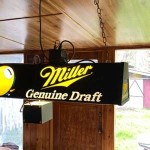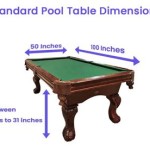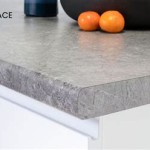How to Set Up a Breakfast Buffet Table
Setting up a breakfast buffet table is an art that balances aesthetics, practicality, and hygiene. Whether for a hotel, a restaurant, a corporate event, or even a large family gathering, a well-organized buffet table can significantly enhance the dining experience. Careful planning and attention to detail are essential to create a flow that minimizes congestion, maintains food quality, and presents an appealing spread to guests.
The following guide provides detailed steps on how to effectively set up a breakfast buffet table, covering key considerations from planning the layout to maintaining food safety and ensuring guest satisfaction.
Planning the Layout: Maximizing Efficiency and Flow
The first step in setting up a successful breakfast buffet involves careful planning of the layout. This includes considering the available space, the number of guests anticipated, the variety of food items being offered, and the overall flow of traffic. A well-planned layout will minimize bottlenecks and ensure a smooth and efficient dining experience for all attendees.
Start by assessing the available space. Measure the dimensions of the area where the buffet will be located. This information will guide decisions regarding the size and number of tables needed. Consider the accessibility of the buffet table from the kitchen and dining areas. A location that allows for easy restocking and access for servers is crucial.
Estimate the number of guests expected to use the buffet. This will influence the quantity of food prepared and the number of serving stations required. For larger crowds, it is often beneficial to duplicate popular food items at multiple stations to reduce waiting times. A higher guest count may also necessitate a larger serving area to accommodate the increased demand.
Determine the variety of food items to be included in the buffet. A diverse selection is often appreciated, but it is important to ensure that each item is presented in an appealing and easily accessible manner. Categorize the food items into logical groupings, such as hot dishes, cold dishes, pastries, fruits, and beverages. This will help in organizing the layout and preventing overcrowding.
Consider the flow of traffic around the buffet table. The ideal layout should allow guests to easily move from one item to the next without bumping into each other. A linear arrangement, where guests move in a single direction, is often the most effective. Avoid creating dead ends or sharp turns that can cause congestion. Ensure sufficient space around the buffet table for guests to comfortably serve themselves and move freely.
Consider placing higher-demand items towards the beginning of the buffet line. Items such as scrambled eggs, bacon, and sausage are frequently popular choices. By placing these items first, guests can quickly acquire their desired portion and proceed to other less frequently selected items. This helps to keep the line moving smoothly.
Beverage stations should be located separately from the main food buffet. This prevents spills and congestion around the food items. A dedicated beverage area can include coffee, tea, juices, water, and potentially other options like milk or hot chocolate. The beverage station should also include appropriate cups, stirrers, and sweeteners.
Utensil stations should be placed at the very end of the buffet line. This prevents guests from having to juggle utensils while selecting their food. Provide adequate numbers of forks, knives, spoons, and napkins. Consider using pre-rolled cutlery sets to streamline the process and maintain hygiene.
Consider the height of the buffet table. A standard table height is generally appropriate, but consider adding risers or tiered displays to create visual interest and make it easier for guests to access items in the back. Different heights can also help separate different food categories, further aiding in organization and presentation.
Food Safety and Hygiene: Maintaining Quality and Preventing Contamination
Maintaining food safety and hygiene is paramount when setting up a breakfast buffet. Proper temperature control, handling practices, and sanitation procedures are essential to prevent foodborne illnesses and ensure the well-being of guests. Adhering to strict guidelines will help to preserve the quality and integrity of the food items.
Implement proper temperature control for hot and cold foods. Hot foods should be maintained at or above 140°F (60°C) using chafing dishes, warming trays, or heat lamps. Cold foods should be kept at or below 40°F (4°C) using ice baths, refrigerated displays, or chilled serving bowls. Regularly monitor the temperature of food items using a calibrated thermometer to ensure they remain within safe ranges. Discard any food that has been held outside of the safe temperature zone for more than two hours.
Practice proper food handling techniques to minimize the risk of contamination. Wash hands thoroughly with soap and water before handling food and after touching any surfaces that may be contaminated. Use separate utensils for each food item to prevent cross-contamination. Avoid touching food with bare hands; instead, use serving spoons, tongs, or gloves. Replace serving utensils frequently, especially if they have been dropped or become contaminated.
Implement procedures for restocking and replenishing food items. When adding fresh food to the buffet, ensure that it is properly heated or chilled before being placed alongside existing items. Rotate food items regularly, placing older items in the front and newer items in the back. This helps to ensure that all food is consumed within a reasonable timeframe and minimizes waste. Avoid mixing fresh food with food that has been sitting out for an extended period.
Provide adequate sneeze guards or food shields for all buffet items. These barriers protect the food from airborne contaminants, such as droplets from coughing or sneezing. Ensure that the sneeze guards are properly positioned to effectively shield the food from potential contamination. Clean the sneeze guards regularly throughout the service period.
Maintain a clean and sanitary environment around the buffet table. Regularly wipe down spills and crumbs to prevent the buildup of bacteria. Provide adequate trash receptacles for guests to dispose of used plates, napkins, and utensils. Clean and sanitize serving utensils frequently. Monitor the buffet area for any signs of pests or unsanitary conditions and take immediate corrective action.
Clearly label all food items with their names and any potential allergens. This allows guests with dietary restrictions or allergies to make informed choices. Use clear and concise labeling that is easy to read. Indicate common allergens, such as nuts, dairy, gluten, and soy. Consider providing separate serving utensils for allergen-free items to further minimize the risk of cross-contamination.
Train staff on proper food safety and hygiene practices. All employees who handle food should be knowledgeable about foodborne illnesses, temperature control, and sanitation procedures. Provide ongoing training to ensure that staff members are up-to-date on the latest food safety guidelines. Regularly monitor employee practices to ensure compliance with established protocols.
Presentation and Aesthetics: Creating an Appealing Display
The presentation and aesthetics of a breakfast buffet table play a crucial role in attracting guests and enhancing their dining experience. A visually appealing display can stimulate appetite and create a positive impression. Attention to detail in terms of arrangement, color coordination, and garnishing can significantly elevate the overall presentation.
Use visually appealing serving dishes and platters. Choose serving dishes that complement the style and theme of the breakfast buffet. Consider using different shapes, sizes, and materials to add visual interest. White or neutral-colored dishes are often a safe choice as they allow the food to take center stage. However, incorporating colorful or patterned dishes can also add a touch of personality.
Arrange food items in an organized and attractive manner. Group similar items together and arrange them in an aesthetically pleasing way. Consider the height and texture of the food items when arranging them on the buffet table. Use risers or tiered displays to create different levels and add visual dimension. Avoid overcrowding the dishes; instead, leave some space around each item to make it more appealing.
Incorporate garnishes to enhance the presentation of food items. Fresh herbs, fruits, and vegetables can be used to add color, texture, and visual appeal. For example, a sprinkle of chopped parsley can brighten up scrambled eggs, while a few slices of oranges can add a touch of elegance to a pastry platter. Use garnishes sparingly to avoid overpowering the flavor of the food.
Use appropriate lighting to highlight the food items. Proper lighting can enhance the colors and textures of the food, making it more appealing to the eye. Use spotlights or overhead lighting to illuminate the buffet table. Avoid using harsh or unflattering lighting that can detract from the presentation.
Incorporate decorative elements to enhance the overall ambiance. Floral arrangements, candles, or other decorative items can add a touch of elegance and sophistication to the buffet table. Choose decorations that complement the style and theme of the event. Avoid using decorations that are too large or bulky, as they can clutter the buffet table and make it difficult for guests to access the food.
Maintain a clean and organized display throughout the service period. Regularly wipe down spills and crumbs and replace soiled napkins. Keep serving dishes clean and free of smudges or fingerprints. Remove any empty dishes or platters promptly. A well-maintained display will create a positive impression and encourage guests to return for more.
Consider the use of signage to guide guests and provide information. Clearly label all food items with their names and descriptions. Use attractive and easy-to-read signage that complements the overall presentation. Consider including information about ingredients, allergens, and nutritional content. Well-placed signage can enhance the guest experience and prevent confusion.
Pay attention to the details. Small details can make a big difference in the overall presentation of a breakfast buffet. For example, using attractive serving utensils, providing neatly folded napkins, and ensuring that the buffet table is clean and well-organized can all contribute to a positive guest experience. Attention to detail demonstrates a commitment to quality and customer satisfaction.

Awesome Breakfast Set Up Buffet Table Food

Buffet Table Decorating Ideas How To Set Elegant Arrangements Breakfast Setting

Setting A Buffet Table How To Cooking Tips Recipetips Com

26 Best Breakfast Buffet Table Ideas Brunch Party

How To Set Up A Buffet Table For Brunch Gatherings B C Guides

How To Set Up The Perfect Brunch Buffet

How To Style A Brunch Buffet Rooms For Blog

Four Pointers For Parties That Pop Natty Gal Brunch Buffet Breakfast Table

Breakfast Buffet Table Set Up Each Morning Of Hotel Turnerwirt Salzburg Tripadvisor

Create Delicious Continental Breakfast Set Up Buffet Rosseto








